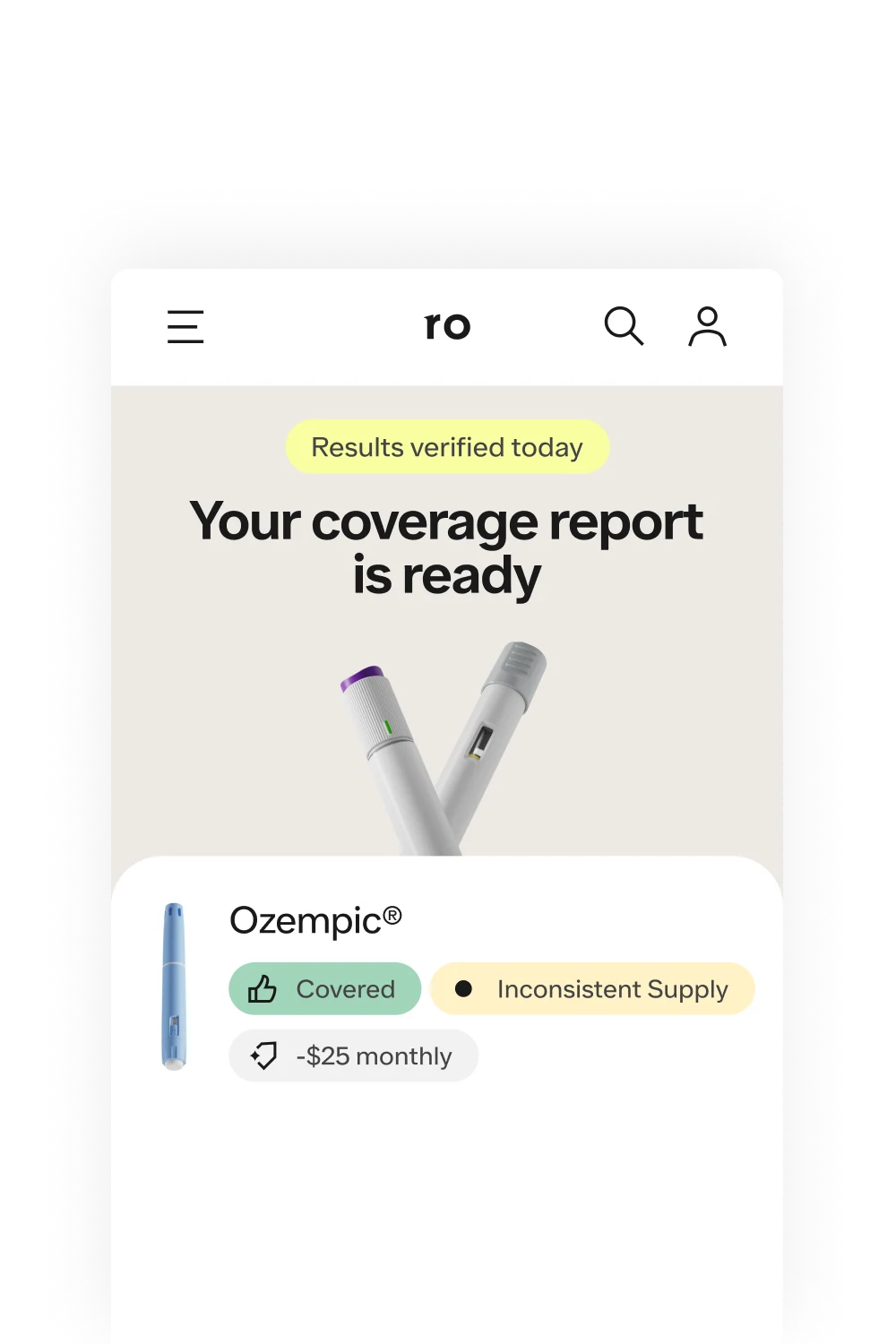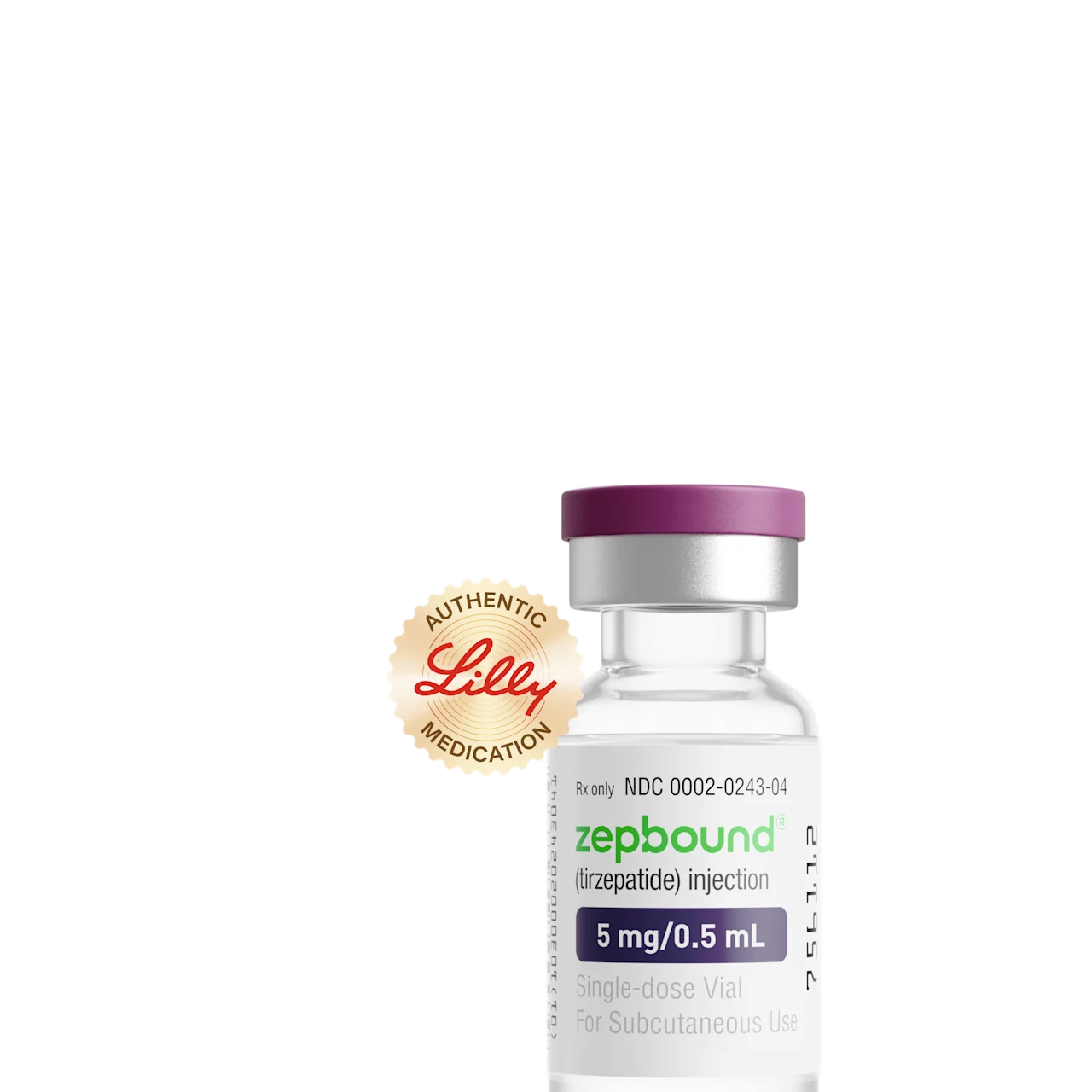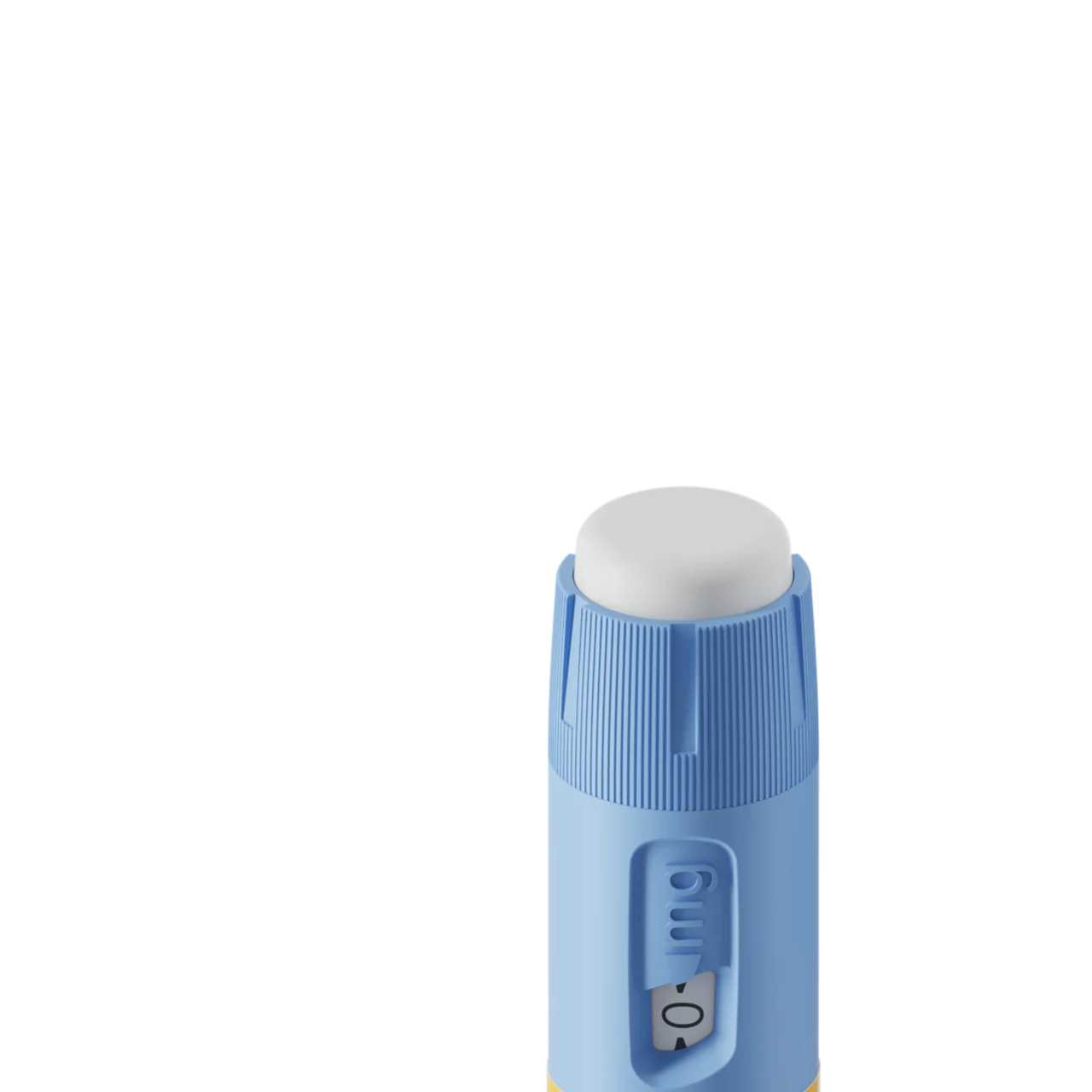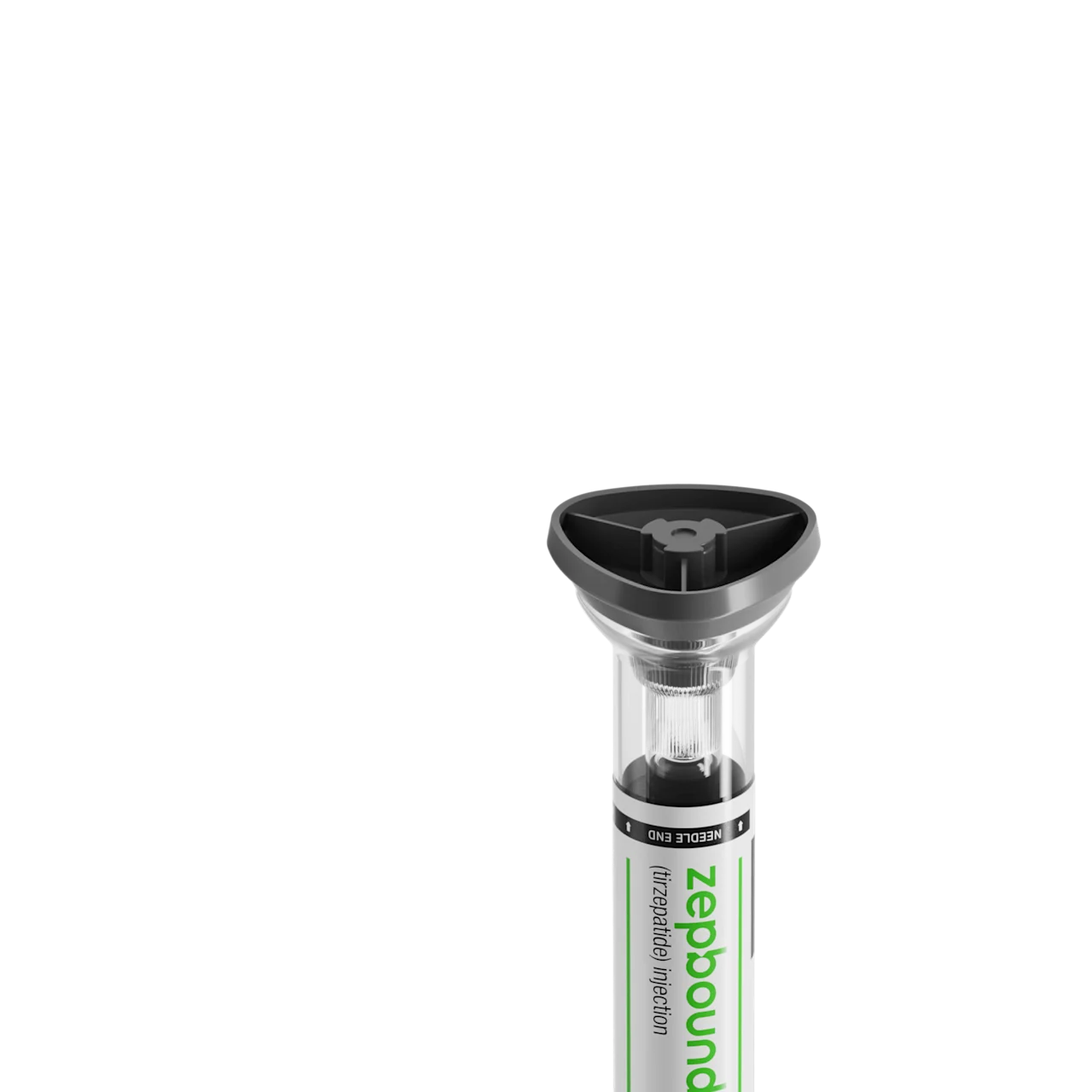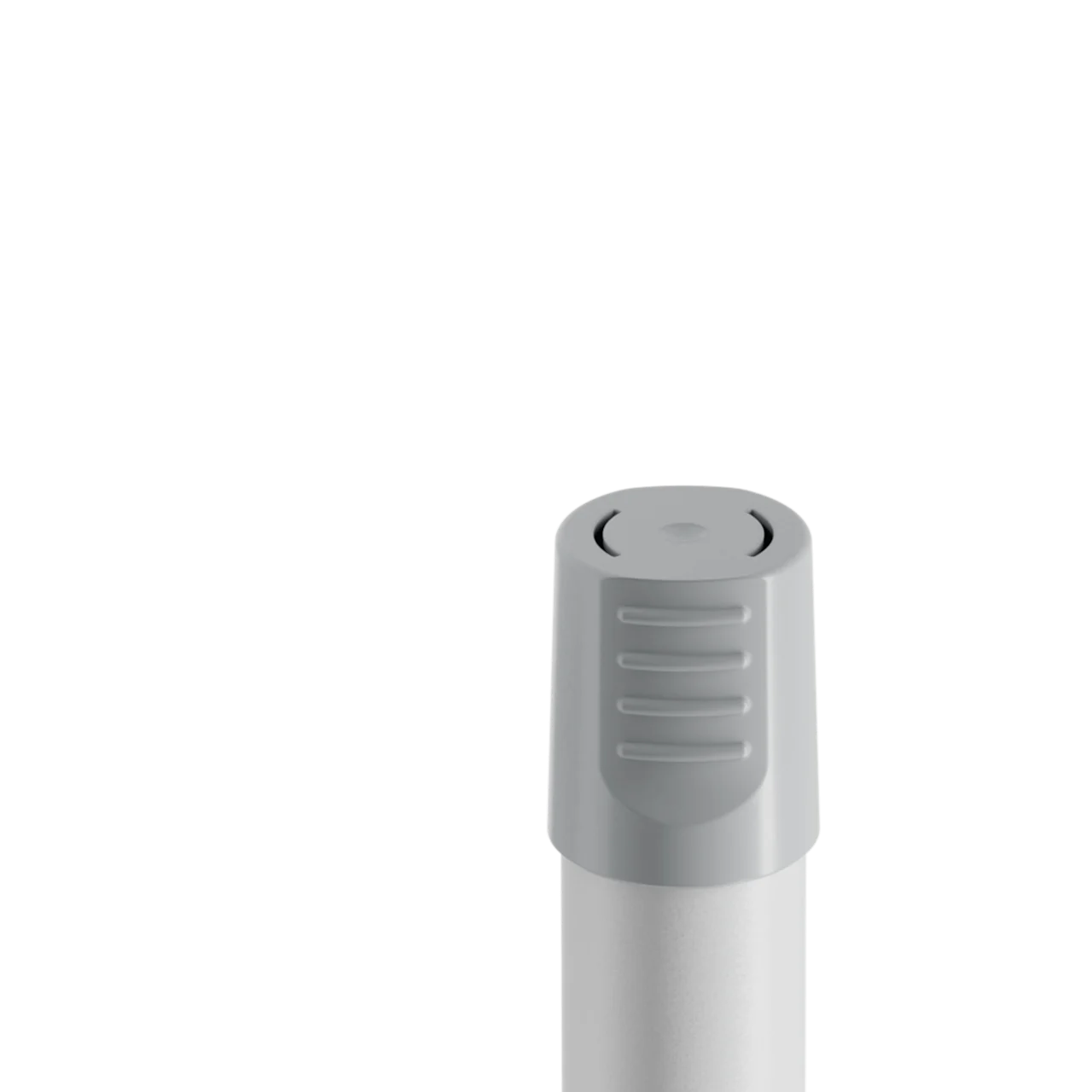Key takeaways
Zepbound and Mounjaro share the same active ingredient (tirzepatide), while Ozempic and Wegovy share a different active ingredient (semaglutide).
Studies have shown that people who took higher doses of Zepbound (10 mg and 15 mg) experienced an average weight loss of about 20% of their baseline weight.
Individuals in a clinical trial of Wegovy who qualified as having either overweight or obesity experienced an average weight loss of 15% from their starting weight.
Here's what we'll cover
Key takeaways
Zepbound and Mounjaro share the same active ingredient (tirzepatide), while Ozempic and Wegovy share a different active ingredient (semaglutide).
Studies have shown that people who took higher doses of Zepbound (10 mg and 15 mg) experienced an average weight loss of about 20% of their baseline weight.
Individuals in a clinical trial of Wegovy who qualified as having either overweight or obesity experienced an average weight loss of 15% from their starting weight.
Finding effective weight loss solutions can be a major challenge. While diet and exercise play a major role, medication can sometimes provide the extra support needed to see significant results.
Zepbound, Mounjaro, Wegovy, and Ozempic are prescription medications that have recently become popular for weight loss in addition to their effectiveness for the treatment of type 2 diabetes. Mounjaro and Zepbound contain the active ingredient tirzepatide. Trying to grasp how these drugs compare can be confusing. Adding to the confusion, these medications are sometimes collectively referred to as “Ozempic drugs,” when that’s not exactly an accurate description.
Each pair of drugs shares the same active ingredient but has different brand names to indicate the conditions they are intended to treat. Mounjaro and Zepbound are two different brand-name versions of the same active ingredient: tirzepatide. Similarly, Ozempic and Wegovy are two different brand-name drugs that contain the same active ingredient: semaglutide. However, in each case, the different medications are FDA-approved to treat different conditions.
In this article, we’ll explain the key similarities and differences of these medications. Consult a healthcare provider for personalized weight loss advice and to find out if one of these medications may be right for you.
Ozempic and Wegovy (semaglutide) differences and similarities
Ozempic and Wegovy contain the same active ingredient: semaglutide. Semaglutide belongs to a drug class called glucagon-like peptide-1 receptor agonists (or “GLP-1s” for short). This drug class was originally developed for treating diabetes, but weight loss was quickly noticed as an added benefit. Examples of other GLP-1s are dulaglutide (Trulicity) and liraglutide (Saxenda, Victoza). Semaglutide also comes as an oral tablet known as Rybelsus.
Overall, Ozempic and Wegovy are similar in more ways than they are different. Similarities include:
Active ingredient: Semaglutide
Mechanism of action: Both drugs work by improving the way your body processes sugar. They also help you feel full faster and for longer after you eat.
Route of administration: Both drugs are injected under the skin (subcutaneous injection). A healthcare professional will teach you how to do the self-injections at home.
Dosing schedule: Ozempic and Wegovy are administered once weekly.
Manufacturer: Both drugs are made by Novo-Nordisk.
Safety profile: Both drugs carry similar warnings and precautions, which are explained later in this article.
High cost: Both drugs are expensive, with no generic alternatives available.
The main difference between Ozempic and Wegovy is the specific indication for which the Food and Drug Administration (FDA) has approved them. Ozempic was first approved in 2017 to treat type 2 diabetes, with Wegovy following in 2021 for weight management. (The details of Ozempic’s and Wegovy’s indications are explained in the next section.) There are also some differences in the available strengths of each product.
Another key difference is the dosage form. Both Ozempic and Wegovy come as prefilled injector pens. Ozempic pens contain multiple doses, and you’ll attach a new pen needle for each injection. In contrast, Wegovy is a single-use injection pen with a built-in needle.
What are Ozempic and Wegovy used for?
The main difference between Ozempic and Wegovy is their specific FDA-approved use. The indications are described in detail on each drug’s official label (also known as prescribing information).
Ozempic is approved for the following uses, according to the FDA labeling:
Controlling blood sugar levels in adults with type 2 diabetes mellitus, along with a healthy diet and increased exercise
Reducing the risk of major heart-related complications in adults with both type 2 diabetes and heart disease
Healthcare providers may prescribe a medication for other, off-label uses if they deem it appropriate for their patient. For example, Ozempic is commonly prescribed off-label for weight loss.
While Ozempic is only officially approved for diabetes treatment, Wegovy is FDA-approved for:
Chronic (long-term) weight management, along with a healthy diet and increased exercise in adults meeting one of the following criteria:
Obesity, or having an initial body mass index (BMI) of 30 kg/m2 or greater
Overweight, with an initial BMI of 27 kg/m2 or greater, along with a diagnosis of a weight-related health condition (e.g., high blood pressure, high cholesterol, type 2 diabetes mellitus)
Chronic weight management along with a healthy diet and increased exercise in children ages 12 years or older with obesity (an initial BMI that is at or greater than the 95th percentile based on the child’s age and biological sex).
How do Ozempic and Wegovy work?
Semaglutide is the active ingredient in Ozempic and Wegovy. It’s a GLP-1 receptor agonist drug that works by mimicking the body’s natural GLP hormone.
When you eat, blood sugar levels rise. This causes GLP to go into action and bind to the GLP-1 receptor, which stimulates the pancreas to release insulin. Insulin works to move sugar into your cells, which brings blood sugar levels back down. Semaglutide works the same way; it binds to the GLP-1 receptor, which stimulates insulin release and lowers blood sugar levels.
Like the naturally occurring GLP, semaglutide also affects the digestive system, but for a much longer period than natural GLP. Semaglutide slows down the gastric emptying process so that food stays in the stomach for a longer time after you eat. This keeps you feeling fuller for longer. As a result, you may not feel like eating as much, which often makes it easier to stick to a healthier diet.
How are Ozempic and Wegovy dosed?
Ozempic and Wegovy are both injectable drugs. These medications are given via subcutaneous injection, which means they are injected just under the skin. The injection sites for Ozempic and Wegovy are the abdomen, outer thigh, or back of the upper arm. A healthcare professional will teach you or a caregiver how to administer injections at home.
Both Ozempic and Wegovy come in a pen form. Wegovy pens come with a needle already attached and are meant for single use, so you dispose of the pen after each injection. Ozempic pens, on the other hand, contain multiple doses. After each Ozempic injection, you’ll attach a new needle to the pen, administer the injection, and then discard the needle. The exact number of doses in an Ozempic pen varies, depending on your dosage.
Ozempic and Wegovy have similar dosing. They are both taken once a week on the same day. The dosing schedule involves starting with a low dose. Your healthcare provider will gradually increase the dose, depending on how well you tolerate the medication, until you reach the target maintenance (long-term) dosage.
The table below compares the typical dosing schedule for Wegovy and Ozempic:
Typical timeline | Recommended Dosage of Wegovy | Recommended Dosage of Ozempic |
|---|---|---|
Weeks 1–4 | 0.25 mg once weekly | 0.25 mg once weekly |
Weeks 5–8 | 0.5 mg once weekly | 0.5 mg once weekly |
Weeks 9–12 | 1 mg once weekly | 1 mg once weekly |
Weeks 13–16 | 1.7 mg once weekly | 2 mg once weekly |
Week 17 and on | 1.7 mg or 2.4 mg once weekly | 2 mg once weekly |
Rx weight loss with Ro
Get access to prescription weight loss medication online
Zepbound and Mounjaro (tirzepatide) differences and similarities
Just like Ozempic and Wegovy, Zepbound and Mounjaro contain an identical active ingredient: tirzepatide. Tirzepatide is a dual GLP-1 receptor agonist and glucose-dependent insulinotropic polypeptide (GIP). While tirzepatide functions similarly to other GLP-1 receptor agonists, the additional GIP component may offer a unique weight loss advantage.
Moujaro and Zepbound are similar in numerous ways, such as:
Active ingredient: Tirzepatide
Mechanism of action: Both drugs work by improving the way your body processes sugar. They also help you feel full faster and keep you feeling full for longer.
Route of administration: Subcutaneous injection.
Dosing schedule: Moujaro and Zepbound are administered once weekly.
Manufacturer: Both drugs are made by Eli Lilly.
Safety profile: Both drugs carry similar warnings and precautions, which are explained later in this article.
High cost: Both drugs are expensive, with no generic versions available.
The main difference between Moujaro and Zepbound is their FDA-approved indications (official uses). The FDA approved Mounjaro for diabetes in 2022 and Zepbound for weight loss in 2023.
What are Zepbound and Mounjaro used for?
The FDA approves Mounjaro to help manage blood sugar levels in adults with type 2 diabetes mellitus, alongside a healthy diet and increased exercise.
While Mounjaro isn’t specifically approved for weight loss, healthcare providers may prescribe it off-label for this purpose.
In contrast, the FDA approves Zepbound for chronic (long-term) weight management alongside strict diet and exercise modifications in the following individuals:
Adults with an initial BMI of greater than or equal to 30 kg/m2
Adults with an initial BMI of greater than or equal to 27 kg/m2 who also have at least one weight-related health condition, such as:
High blood pressure
High cholesterol
Obstructive sleep apnea
Type 2 diabetes
Cardiovascular disease (heart and/or blood vessel problems)
Mounjaro and Zepbound are only approved for use in adults. These medications have not been approved for use in people younger than 18 years old.
How do Zepbound and Mounjaro work?
Zepbound and Mounjaro contain the same active ingredient (tirzepatide), so they work the same way. Tirzepatide has a dual mechanism to help reduce blood sugar levels and promote weight loss. The first mechanism involves GLP-1 and is identical to how Ozempic and Wegovy work. The second mechanism involves a different hormone called GIP and works in a similar but not identical way to GLP-1.
Like GLP-1, GIP is a natural hormone produced by the body. In response to elevated blood sugar levels, GIP binds to a receptor on the pancreas, which signals the pancreas to release insulin to counteract the high blood sugar. Tirzepatide mimics GIP, binding to pancreas receptors and stimulating the release of insulin. In this way, tirzepatide helps reduce blood sugar levels.
As with GLP-1, GIP also has a slowing effect on the digestive tract. GIP keeps food in the stomach for longer, creating a faster and longer-lasting feeling of being full. This results in less food intake, which directly promotes weight loss.
How are Zepbound and Mounjaro dosed?
Despite their different uses, Zepbound and Mounjaro share typical dosing schedules. As with Ozempic and Wegovy, Zepbound and Mounjaro come as pens containing a solution that you’ll inject under the skin of the abdomen, outer thigh, or back of the upper arm. Similar to Wegovy, both Zepbound and Mounjaro are one-time-use pens with an attached needle.
Zepbound and Mounjaro are administered once weekly on the same day each week. The starting dose and schedule for increasing the dose are identical for both drugs. However, not everyone can tolerate increasing the dose this quickly, and some people don’t reach the maximum dose of 15 mg due to side effects. Be sure to follow the dosage recommended by your healthcare provider.
The table below shows the typical dosing schedule for Mounjaro and Zepbound.
Typical timeline | Recommended Dose of Mounjaro | Recommended Dose of Zepbound |
|---|---|---|
Weeks 1–4 | 2.5 mg once weekly | 2.5 mg once weekly |
Weeks 5–8 | 5 mg once weekly | 5 mg once weekly |
Weeks 9–12 | 7.5 mg once weekly | 7.5 mg once weekly |
Weeks 13–16 | 10 mg once weekly | 10 mg once weekly |
Week 17–20 | 12.5 mg once weekly | 12.5 mg once weekly |
Week 21 and on | 15 mg once weekly | 15 mg once weekly |
Ozempic vs. Wegovy vs. Zepbound vs. Mounjaro
Wegovy (semaglutide) and Zepbound (tirzepatide) are approved for weight management, while Ozempic (semaglutide) and Mounjaro (tirzepatide) are approved for controlling blood sugar in people with type 2 diabetes. For all of the above uses, these drugs are meant to be used in combination with lifestyle changes like diet and exercise. Let’s take a closer look at how these drugs compare for their respective uses.
Which is better for weight loss: semaglutide or tirzepatide?
Wegovy (semaglutide) and Zepbound (tirzepatide) each represent an effective option for weight loss according to numerous studies demonstrating significant results.
In clinical trials of Wegovy, individuals qualifying as having either overweight or obesity experienced an average weight loss of 15% from their starting weight.
Clinical trials of Zepbound showed that participants taking lower doses of Zepbound experienced similar weight reduction as seen with Wegovy. However, trial participants who took higher doses of Zepbound (10 mg and 15 mg) experienced an average weight loss of about 20% of their baseline weight.
These findings were confirmed in the recently published SURMOUNT-4 trial, which investigated the long-term impact of continuing versus stopping Zepbound treatment. In SURMOUNT-4, researchers found that 9 months of high-dose Zepbound resulted in a 20% weight reduction on average, as found in previous clinical trials. The new trial also demonstrated that continuing therapy beyond 9 months helped maintain weight loss or even achieve an additional 5% weight loss. However, those who stopped treatment after 9 months experienced an average weight regain of 14%.
In a 2022 study that directly compared tirzepatide and semaglutide for weight loss, tirzepatide outperformed semaglutide. After 72 weeks of tirzepatide treatment, the average participant’s weight reduction was about 18%, while participants taking semaglutide treatment averaged about 13% weight reduction after 68 weeks.
Zepbound and Wegovy require lifestyle changes to achieve significant and lasting weight loss. A study in 2020 showed that strict diet and exercise goals resulted in nearly 7% more weight loss than taking a GLP-1 medication alone. So, it's important to follow a healthy diet and increase exercise to maximize your results and get the most out of Wegovy or Zepbound.
How do side effects differ?
Given the similarities between tirzepatide and semaglutide, the same side effects are common with all four drugs. In separate clinical trials of each drug, the most common side effects included nausea, diarrhea, constipation, and abdominal pain. These side effects tend to be worse when you first start treatment or after a dose increase. The symptoms generally ease with time as your body adjusts to the medication. Your healthcare provider can suggest ways to manage nausea and other side effects, such as making tweaks to your diet and meal schedule.
Though less common, severe side effects may occur with any of these medications, including:
Hypoglycemia (low blood sugar) is more likely when GLP-1 drugs are used with other diabetes medications designed to lower blood sugar, such as insulin
Pancreatitis
Severe allergic reaction
Gallbladder problems
While these medications have similar potential side effects, the side effects may occur more frequently in those taking Mounjaro or Zepbound than in those taking Ozempic or Wegovy. Tirzepatide is more potent than semaglutide. That means potentially more significant weight loss and blood sugar control, but also may come with more frequent or severe side effects, as observed in studies.
All of the above GLP-1 medications carry a boxed warning for the risk of thyroid cancer. Because of this risk, it’s important to tell your healthcare provider right away if you notice a lump in your throat, voice hoarseness, fatigue, or other unusual symptoms.
Speak to your healthcare provider if you’re interested in learning which weight loss medication might be right for you. You can also go through an online telehealth service like Ro Body to work with a licensed healthcare provider who can prescribe these medications if appropriate and monitor your progress on your weight loss journey.
DISCLAIMER
If you have any medical questions or concerns, please talk to your healthcare provider. The articles on Health Guide are underpinned by peer-reviewed research and information drawn from medical societies and governmental agencies. However, they are not a substitute for professional medical advice, diagnosis, or treatment.
Zepbound Important Safety Information: Read more about serious warnings and safety info.
Mounjaro Important Safety Information: Read more about serious warnings and safety info.
Wegovy Important Safety Information: Read more about serious warnings and safety info.
Ozempic Important Safety Information: Read more about serious warnings and safety info.
Saxenda Important Safety Information: Read more about serious warnings and safety info.
References
Aronne, L. J., Sattar, N., Horn, D. B., et al. (2023). Continued treatment with tirzepatide for maintenance of weight reduction in adults with obesity: the SURMOUNT-4 randomized clinical trial. JAMA, 2024, 331(1), 38-48. doi:10.1001/jama.2023.24945. Retrieved from https://jamanetwork.com/journals/jama/fullarticle/2812936
Frias, J. P., Davies, M. J., Rosenstock, J., et al. (2021). Tirzepatide versus semaglutide once weekly in patients with type 2 diabetes. New England Journal of Medicine, 385, 503-515. doi:10.1056/NEJMoa2107519. Retrieved from https://www.nejm.org/doi/full/10.1056/NEJMoa2107519?query=recirc_curatedRelated_article
Food and Drug Administration (FDA-a). (2023). Mounjaro (tirzepatide) prescribing information. Retrieved from https://www.accessdata.fda.gov/drugsatfda_docs/label/2023/215866Orig1s002s006lbl.pdf
Food and Drug Administration (FDA-b). (2023). Orange book: Approved drug products with therapeutic equivalence evaluations. Retrieved from https://www.accessdata.fda.gov/scripts/cder/ob/index.cfm
Food and Drug Administration (FDA-c). (2023). Ozempic (semaglutide) prescribing information. Retrieved from https://www.accessdata.fda.gov/drugsatfda_docs/label/2023/209637s020s021lbl.pdf
Food and Drug Administration (FDA-d). (2023). Wegovy (semaglutide) Prescribing information. Retrieved from https://www.accessdata.fda.gov/drugsatfda_docs/label/2023/215256s007lbl.pdf
Food and Drug Administration (FDA-e). (2023). Zepbound (tirzepatide) injection label. Retrieved from https://www.accessdata.fda.gov/drugsatfda_docs/label/2023/217806s000lbl.pdf
Tronieri, J.S., Fabricatore, A.N., Wadden, T.A., et al. (2020). Effects of dietary self-monitoring, physical activity, liraglutide 3.0mg, and placebo on weight loss in the SCALE IBT trial. Obesity Facts, 13(6), 572-583. doi:10.1159/000511130. Retrieved from https://www.ncbi.nlm.nih.gov/pmc/articles/PMC7802504/
Wharton, S., Calanna, S., Davies, M., et al. (2022). Gastrointestinal tolerability of once-weekly semaglutide 2.4 mg in adults with overweight or obesity, and the relationship between gastrointestinal adverse events and weight loss. Diabetes, Obesity & Metabolism, 24(1), 94–105. doi:10.1111/dom.14551. Retrieved from https://www.ncbi.nlm.nih.gov/pmc/articles/PMC9293236/

